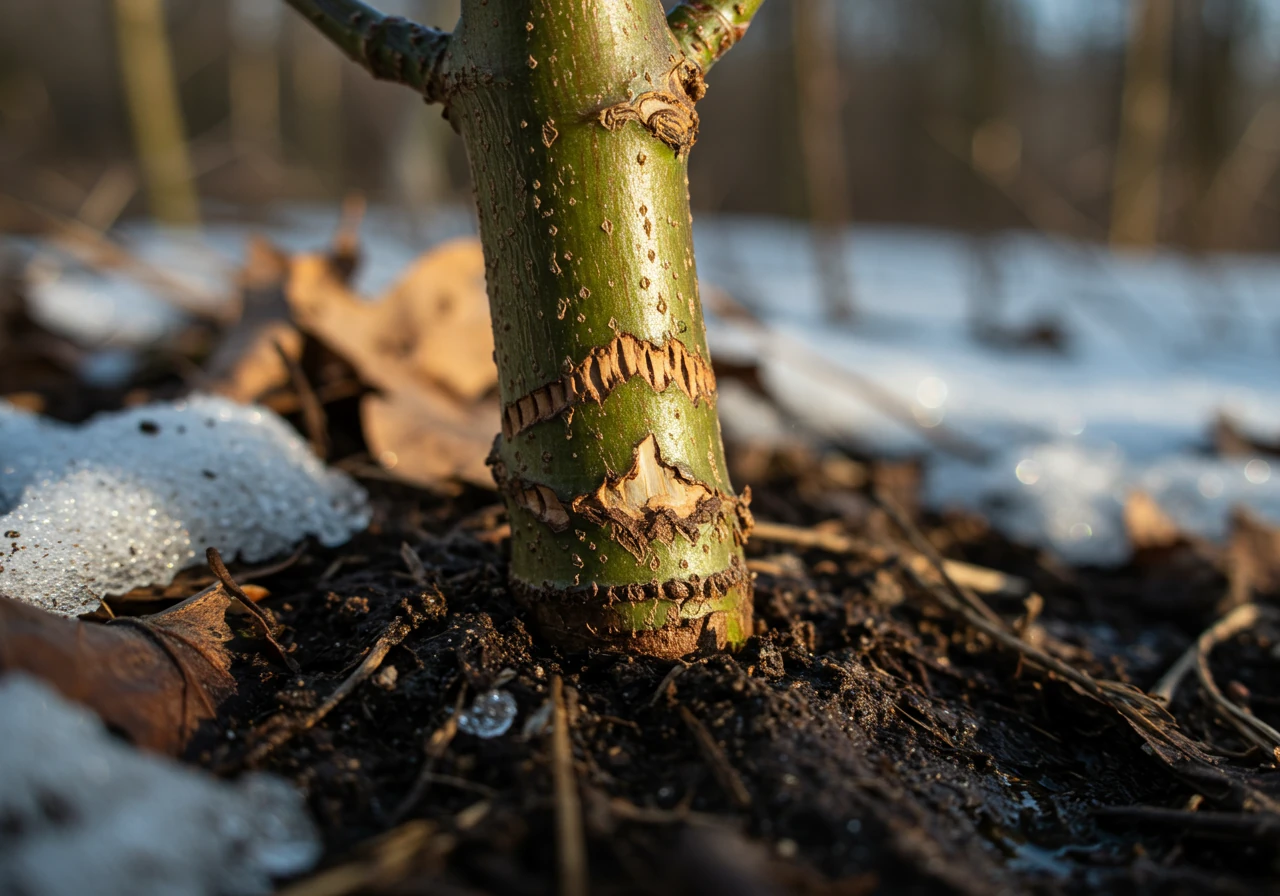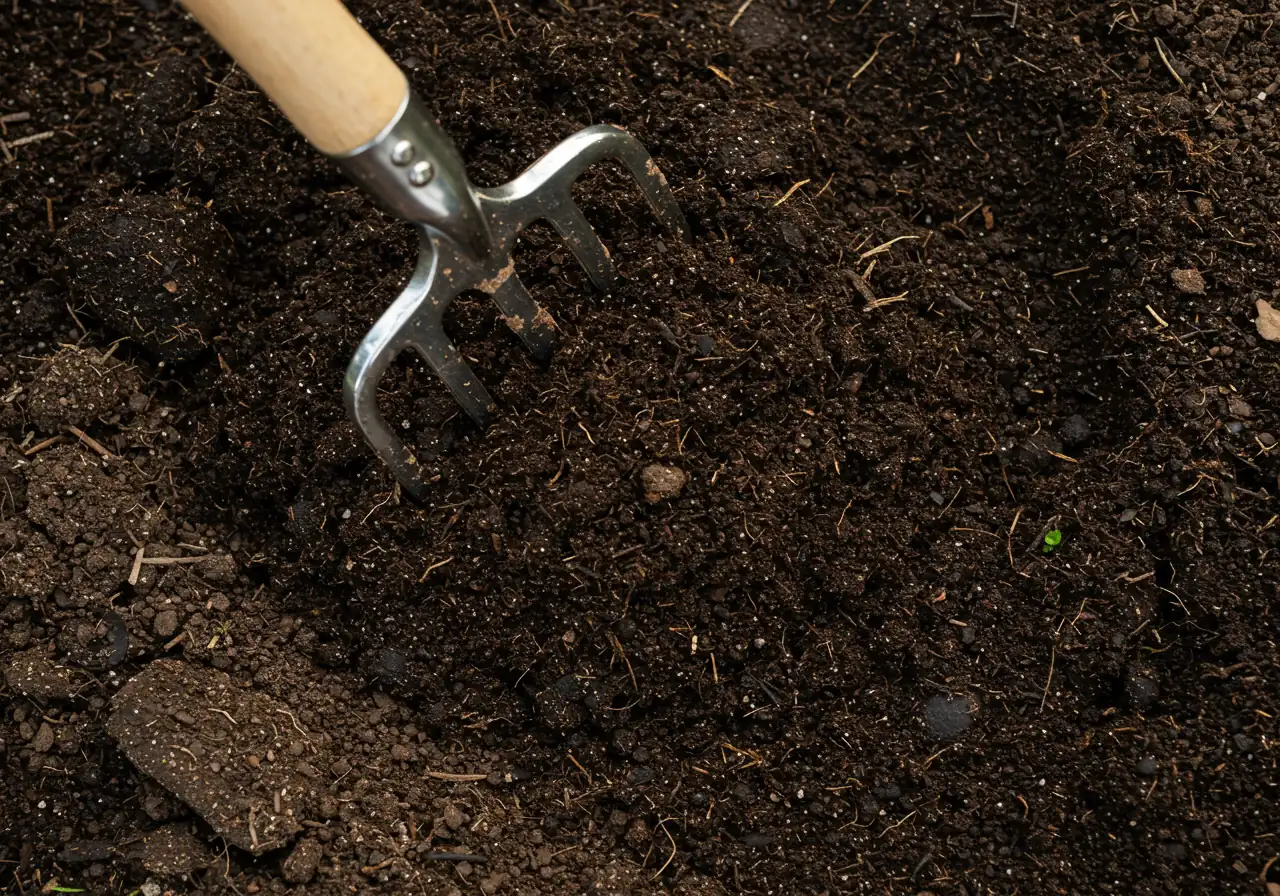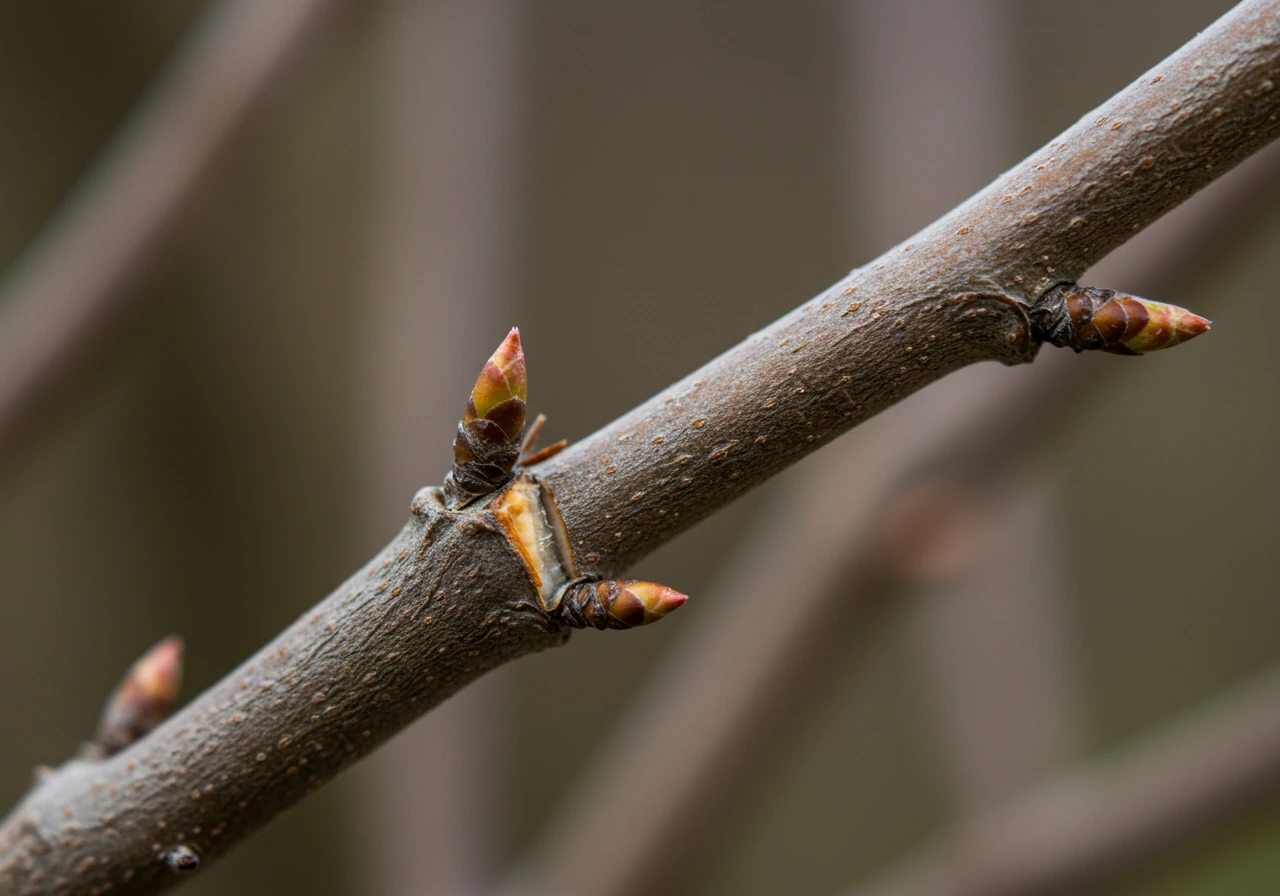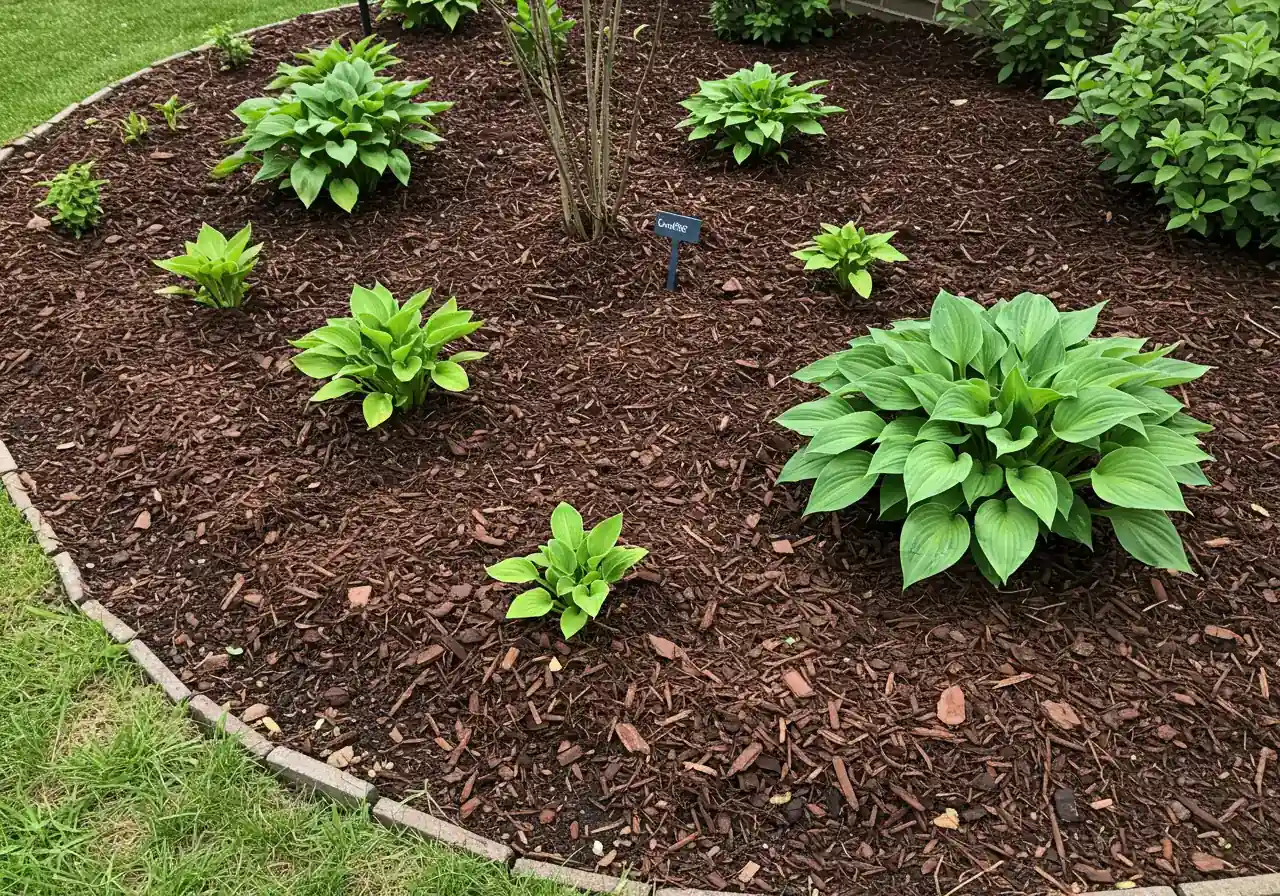Winchester Spring Garden Health Check: Prevent Plant Loss
Quick Guide to Spring Garden Success:
- Assess Damage: Check for winter impacts (broken branches, pests, drainage issues).
- Prep Soil: Amend with compost for better structure and nutrients.
- Prune Wisely: Remove dead/damaged wood; time pruning based on flowering season.
- Monitor Pests: Inspect regularly and use gentle controls first.
- Water & Mulch: Water deeply, less often; apply mulch correctly.
Need help getting your garden ready? Request a quote today!
Introduction: Hey Winchester! Let’s Wake Up Your Garden Without the Heartache!
Alright Winchester, are you feeling that familiar itch? The snow is (mostly!) gone, the days are getting longer, and that patch of earth outside your window is calling your name. We get it! After a long Ottawa winter, the urge to dive headfirst into *gardening* is strong. But hold your trowels for just a second!
As fellow residents of the Ottawa region, we know our springs can be a bit… dramatic. One week it feels like summer, the next you’re scraping *frost* off the windshield again. And let’s not forget that soggy *soil* that can swallow your boots whole! Rushing your *spring cleanup* or planting too early in these conditions can unfortunately lead to sad, droopy *plants* and wasted effort – real garden grief!
Think of this guide as your garden’s gentle wake-up call, a friendly spring health check designed right here with our local climate in mind. We want to help you avoid those common pitfalls and get your landscaping thriving, whether you’re right here in Winchester or just down the road in communities like Metcalfe or Russell. Let’s get your garden off to a fantastic start, minus the frustration!
Step 1: The Post-Winter Walkabout – Assessing the Damage (and Potential!)
Okay, Winchester neighbours, grab a coffee (or maybe something stronger after *that* winter!) and let’s take our first official stroll of the gardening season. Resist the urge to immediately start digging or pruning – right now, we’re just detectives, gathering clues about what Mother Nature (and maybe Old Man Winter) has been up to in your yard. This post-winter walkabout is crucial for a successful *spring cleanup*.

Think of this as your garden’s spring check-up. Before you make any big plans, you need to see what survived, what needs help, and what opportunities might be hiding under that lingering leaf litter. Our Ottawa winters, with their heavy snow, ice storms, and freeze-thaw cycles, can leave behind a few surprises.
First, look up! Check your trees and larger shrubs for broken or damaged branches caused by snow or ice load. Are any hanging precariously? Make a note of those – safety first! Now look down. Check the base of shrubs and trees, especially if you live near fields like in Osgoode or Greely, for signs of rodent damage like gnawed bark. Rabbits and voles get hungry over winter too! Also, examine plants near roads or sidewalks for signs of salt damage – often looks like browning or “burnt” edges on evergreen needles or stems. Dealing with these issues early is key, and you can find more guidance on .
Next, assess your *soil* and *drainage*. Are there areas where water is pooling significantly now that the snow has melted? Soggy spots can mean compacted soil or poor grading, which isn’t great for *plant* roots. Remember how important good drainage is? Taking steps in the fall can really help prevent soggy spring messes; reviewing some might give you ideas for next year. Also, keep an eye out for signs of *frost* heave that might have disturbed smaller plants or pathway edges.
Don’t forget your hardscaping and features! Give your pathways, patios, fences, and retaining walls a once-over. Did any pavers shift? Is the fence leaning a bit more than you remember? And while you’re at it, check your *outdoor lighting* fixtures. Are bulbs burnt out, or did any fixtures get damaged or knocked askew by snow clearing? Ensuring they’re in good shape is important for safety and ambiance; maybe it’s even time for an upgrade using insights from this .
Finally, look for lingering signs of pests or diseases on any remaining foliage or stems. Good *plant health* starts with prevention, and addressing problems early is much easier. Thinking back to how you prepped your garden can be helpful; if you followed good practices like those in our , you might find fewer problems now. Consider visiting local resources like the Friends of the Central Experimental Farm for additional plant health tips.
Your Post-Winter Walkabout Checklist:
- Broken/damaged tree or shrub branches?
- Signs of animal damage (gnawing at base)?
- Salt damage on plants near walkways/roads?
- Areas of poor *drainage* (standing water)? (Check City of Ottawa drainage info for property owner tips).
- Signs of *frost* heave (disturbed soil/pavers)?
- Damage to fences, paths, patios, walls?
- *Outdoor lighting* fixtures functional and intact?
- Visible signs of leftover pests or diseases?
- General debris (leaves, twigs, winter’s surprises)?
Taking these few minutes to assess really sets you up for success. It helps you prioritize your *spring cleanup* tasks and spot potential problems before they become big headaches. Feeling a bit overwhelmed by the list? Don’t worry, tackling it step-by-step makes it manageable. And if the damage seems extensive or you’d just rather have an expert eye, remember that professional Landscaping and Yard Cleanup Services are always an option right here in the Winchester area. You can also find us on Google!
Step 2: Soil First! Giving Your Garden Beds the Spa Treatment
Okay, team, let’s talk dirt! Seriously though, after our walkabout, the next *crucial* step is giving your garden beds the VIP treatment. Think of it like a spa day for your soil – because happy soil equals happy plants! Neglecting this step is like trying to run a marathon on an empty stomach; your garden just won’t have the energy it needs to thrive. Healthy soil structure allows for good root growth, proper *drainage* (remember those soggy spots we saw?), and nutrient availability.

Here in the Ottawa area, we often deal with heavy clay soil. While clay holds nutrients well, it can also compact easily, making it tough for roots to penetrate and water to drain. You might find slightly different conditions depending on your specific neighbourhood – established gardens in areas like Manotick might have lovely, amended loam built up over years, while newer developments in places like Barrhaven could still be dealing with compacted subsoil left after construction.
So, how do you know what you’re working with? Forget fancy lab coats; try the simple squeeze test! Grab a handful of *slightly* damp soil (wait until it’s not soaking wet – working wet clay is a recipe for concrete!). Squeeze it gently.
- Does it form a tight, sticky ball that stays clumped even when poked? Likely high clay content.
- Does it feel gritty and fall apart immediately? Sandy soil.
- Does it hold its shape but crumble easily when poked? Bingo! That’s lovely loam – the ideal mix.
For a bit more detail, simple home soil test kits from garden centres can give you a good idea of your soil’s pH and nutrient levels.
Regardless of your starting point, the universal answer to better soil health in spring is *organic matter*. This is where the real spa magic happens! Adding amendments improves structure, aeration, *drainage*, and nutrient content. The absolute champion? Compost! It’s black gold for your garden, teeming with beneficial microbes. Making your own compost is a fantastic *eco-friendly* practice, turning kitchen scraps and yard waste into garden goodness.
If you don’t have homemade compost, bagged composted manure or quality garden compost are excellent choices. Gently work a few inches of your chosen amendment into the top 6-8 inches of your *garden beds*. Avoid excessive tilling, especially with clay soil, as it can destroy the soil structure you’re trying to build. A garden fork is often better than a rototiller for loosening soil and incorporating amendments.
Compost: The All-Around Star
Improves structure (clay & sand), adds nutrients slowly, boosts microbial life. Good for everything! Ideal for top-dressing or incorporating gently.
Composted Manure: Nutrient Booster
Adds significant nutrients and organic matter. Ensure it’s fully composted to avoid burning plants. Excellent for vegetable gardens and heavy feeders.
Peat Moss / Coco Coir: Water Retainer
Helps sandy soil hold moisture and improves aeration in clay. Consider coco coir as a more sustainable alternative to peat moss. Mix in well.
Leaf Mold: Soil Conditioner
Decomposed leaves, excellent for improving soil structure and water retention. A fantastic free resource if you compost your fall leaves.
This soil work is often part of a larger spring refresh. If digging in amendments across multiple beds feels like too much, remember that a Winchester Garden Clean Up Service or a Metcalfe Garden Clean Up Service can handle the heavy lifting, incorporating soil improvement into the overall tidy-up. For those needing more significant soil restructuring or large volume additions, exploring broader Landscaping and Yard Cleanup Services might be beneficial. Getting the foundation right is key, and if you need expert help specifically with this stage, consider dedicated Professional Soil Preparation Services. Healthy soil isn’t just a spring task; it’s part of good Ongoing Garden Maintenance that pays off all season long. Give your soil some love now, and your plants will thank you for it later!
Step 3: Pruning Power – Snip Snip Hooray for Healthy Growth!
Okay, Winchester gardeners, let’s sharpen those shears! After assessing the scene and giving your soil some love, it’s time for Step 3: Pruning Power! Think of pruning as giving your plants a much-needed haircut after a long winter nap. It’s not about randomly hacking away (put down the hedge trimmer unless it’s *actually* a hedge!), but about encouraging healthy, vigorous growth and maybe even more flowers later on. Snip snip hooray!

Why bother with pruning? It might seem counterintuitive to cut bits off your plants, but it’s super beneficial. Pruning helps:
- Remove the Bad Stuff: Get rid of dead, damaged, or diseased branches (the 3 D’s!). This prevents problems from spreading and tidies things up. Remember those broken branches we spotted in Step 1? Now’s the time to deal with them carefully.
- Shape Up: Gently guide the plant’s shape and size.
- Boost Growth: Encourage new shoots, more flowers, or better fruit production on *some* plants.
- Improve Airflow: Opening up the center of a shrub helps sunlight reach inner leaves and reduces the risk of fungal diseases. Good *plant health* loves good circulation!
Hold Your Horses! What *Not* to Prune Now
Before you go full Edward Scissorhands, know this: timing is everything in the *gardening* world! The biggest mistake in spring pruning? Chopping off the flower buds on shrubs that bloom early on last year’s growth.
- Spring Bloomers: Do *not* prune shrubs like Forsythia, Lilac, Weigela, or Rhododendrons *before* they flower. Pruning them now means you’ll cut off this spring’s blooms! Wait until right after they finish flowering to prune these guys.
Alright, What *Can* We Prune?
- Summer-Flowering Shrubs: Shrubs that bloom later in summer on *new* wood (this year’s growth) can often be pruned back in early spring. Think Hydrangeas like ‘Annabelle’ or ‘Limelight’ (but check your specific variety!), Spirea (some types), and Potentilla. This encourages lots of fresh growth that will carry the summer flowers.
- Roses: Once the worst danger of hard *frost* is past (usually late April/early May here in Ottawa), prune back most roses. Remove dead canes and crossing branches, aiming for an open, vase-like shape.
- Perennials and Ornamental Grasses: Cut back the dead stems and foliage from last year on most perennials (like Hostas, Daylilies, Peonies) and ornamental grasses. Cut them down close to the ground to make way for new growth.
- Any Plant: Remove the 3 D’s (Dead, Damaged, Diseased wood) from *any* woody plant or shrub anytime you see it.
Simple Pruning Steps & Tool Tip:
- Clean Your Tools: Seriously! Wipe your pruner blades with rubbing alcohol or a 10% bleach solution between plants (and especially after cutting diseased wood) to prevent spreading problems. Dirty tools are a garden no-no.
- Identify the 3 D’s: Start by removing any obviously dead, broken, or discolored stems. Cut back to healthy, green wood.
- Look for Crossing Branches: Branches rubbing together can cause wounds. Remove the weaker or poorly placed one.
- Make Clean Cuts: Cut just above an outward-facing bud (about 1/4 inch). This directs new growth outwards, keeping the center open. Avoid leaving long stubs.
- Tidy Up: Dealing with the debris is part of the job. All those cuttings can add up! Proper Property Clean Up includes managing this green waste, maybe even composting some of it to eventually enrich your soil – remember how important good Soil Preparation is?
A Note on Big Trees: If you have large, mature trees needing attention, especially in established areas like Nepean or Richmond, please be careful! Pruning high branches requires expertise and safety equipment. It’s often best to call in certified arborists for that kind of work.
Pruning can feel a bit daunting at first, but taking these steps helps keep your *landscaping* looking sharp and your plants happy. And if the task seems too big, or you’d rather just enjoy the results, remember that help is available. Whether you’re needing assistance in Metcalfe with a full spring refresh through a Metcalfe Yard Cleanup Service or closer to Marionville looking for similar support via a Marionville Yard Cleanup Service, professionals can handle the pruning and cleanup for you. Give your plants this boost, and they’ll surely give you a green Thank You! with lush growth all season long.
Step 4: Pest & Disease Patrol – Nipping Problems in the Bud
Okay gardeners, let’s talk about the uninvited guests! After all your hard work prepping soil and pruning, the last thing you want is pests or diseases crashing the party. Step 4 is all about being a garden detective, patrolling your plants regularly to spot trouble *before* it gets out of hand. Nipping problems in the bud (sometimes literally!) is way easier than staging a full-blown intervention later.
Think of yourself as the neighbourhood watch for your *landscaping*. A little vigilance goes a long way, especially in the cool, damp springs we often get here in the Ottawa region, which can be perfect conditions for certain fungal diseases to wake up. Being observant is your best defence!
So, what are you looking for? Make it a habit, maybe once or twice a week, to take a slow stroll through your garden. Look closely at your plants – inspect the tops *and* undersides of leaves, check new growth shoots, examine stems, and peek around the base. Are you seeing:
- Tiny critters clustered on new growth? (Hello, aphids!)
- Holes chewed in leaves, maybe with slimy trails nearby? (Uh oh, slugs or snails!)
- Sticky residue on leaves or stems? (Often left by aphids or scale insects.)
- White powdery patches on leaves? (Sounds like powdery mildew.)
- Webbing or ‘tents’ in the crotches of tree branches? (Could be tent caterpillars.)
- Spots, discoloration, or wilting that doesn’t seem right?
Catching these things early makes dealing with them much simpler and less stressful. Sometimes, the simplest solutions work best. Spot a few aphids? A strong squirt from the hose might be enough to knock them off. See a slug munching your hosta? Hand-pick it (gloves recommended for the squeamish!) and dispose of it. This proactive approach is part of Integrated Pest Management (IPM), which means using the least harmful methods first.
We also want to make smart choices from the start. Opting for disease-resistant plant varieties during your initial planning is a fantastic preventative measure – something to consider during Thoughtful Plant and Material Selection. Similarly, ensuring plants aren’t overcrowded when installed helps with airflow, reducing fungal risks. Good practices during Professional Garden Installation can set your garden up for better health long-term.
Common Spring Garden Foes & Friendlier Fixes
| Problem | Signs | Organic Control |
|---|---|---|
| Aphids | Tiny pear-shaped bugs (green, black, brown), often clustered on new growth; sticky ‘honeydew’. | Strong water spray, insecticidal soap, encourage ladybugs. |
| Slugs & Snails | Irregular holes in leaves (especially hostas, lettuce), silvery slime trails. Often worse in damp areas or properties near fields, like you might find around Kars or Vernon. | Hand-picking (early morning/evening), beer traps, diatomaceous earth, copper barriers. |
| Powdery Mildew | White, powdery spots/patches on leaves and stems. | Improve air circulation (spacing, pruning), neem oil spray, remove infected leaves. |
| Tent Caterpillars | Silken ‘tents’ spun in forks of tree/shrub branches (common on crabapples, cherries). | Prune out tents early/cool days. Use Bacillus thuringiensis (Bt). |
Removing infected plant debris or heavily infested branches is also key to preventing spread. Thorough spring tidying, like the work done by a Metcalfe Yard Cleanup Service, helps eliminate places where pests and diseases might be hiding from winter. Staying on top of *plant health* is crucial if you’re aiming for those picture-perfect garden Before & After Landscape Transformations. Consistent care helps ensure your plants stay healthy and beautiful, contributing to the kind of lush results you can see in our Clean Yards Project Gallery. Keep your eyes peeled, intervene early, and your garden will thank you for it!
Step 5: Smart Watering & Mulching – Tuck Your Plants In!

Alright, let’s get to the final cozy step! Your garden beds are clean, the soil is happy, and your plants have had their spring trim. Now it’s time to provide the finishing touches that really set them up for success: smart watering and the magic of mulch. Think of it as drawing a warm bath and then tucking your plants in with a comfy blanket!
Water Wisely: Less is Often More
Spring watering in the Ottawa area can be a bit tricky. We often get decent rainfall, but sometimes dry spells sneak in, especially as things warm up. Newly planted perennials, trees, or shrubs, and anything you’ve transplanted definitely needs consistent moisture to establish roots.
- Go Deep, Not Shallow: When you do water, water deeply. Aim to moisten the *soil* down to the root zone (at least 6 inches deep). Shallow, frequent sprinkles just encourage shallow roots, which suffer more in dry spells. Poke a finger down into the soil – if it’s dry a couple of inches down, it’s likely time to water.
- Morning is Best: Watering early in the day gives foliage time to dry before evening, reducing the risk of fungal diseases taking hold. Plus, less water is lost to evaporation compared to watering in the midday sun.
- Check Before You Soak: Before turning on the hose, check the soil moisture. Overwatering can be just as bad as underwatering, leading to root rot. Your plants aren’t fish! This careful approach helps conserve water, which is always a good thing. While we’re focused on garden beds here, remember your lawn has different needs – you can find tips specific to grass over on our Lawn Care Services page. Find local watering guidelines from resources like the Rideau Valley Conservation Authority.
Mulch Magic: Your Garden’s Best Friend
Now, for the ‘tucking in’ part – mulching! Applying a layer of mulch over your garden *soil* is one of the best things you can do for your *plants*. Seriously, it’s like a superhero cape for your garden beds. Trust us, as folks who know Ottawa gardens well (you can learn more About Us), mulching is a game-changer. Its benefits include:
- Moisture Retention: Mulch acts like a lid, slowing down evaporation from the soil surface. This means you water less often!
- Weed Suppression: A good layer of mulch blocks sunlight, making it much harder for pesky weeds to sprout. Hooray for less weeding!
- Temperature Moderation: It insulates the soil, keeping it cooler in summer and warmer during those spring (and fall!) temperature swings. This reduces stress on plant roots.
- Soil Improvement (Organic Mulches): As organic mulches like bark or compost break down, they add valuable *organic matter* to your soil, improving its structure and fertility over time.
In areas like Embrun, where homeowners take pride in their yards, you’ll often see beautifully mulched beds contributing to the overall neat appearance.
Choosing Your Mulch & Applying it Right:
Around here, common choices are shredded bark (like pine or cedar) or compost. Cedar mulch has the added bonus of smelling nice and potentially deterring some insects. They break down over time, feeding the soil. Stone mulch is another option, but be aware it can absorb and reflect heat, which isn’t ideal for all plants.
- How Much? Apply a layer about 2-3 inches deep. Too thin, and it won’t suppress weeds or hold moisture well. Too thick, and it can prevent water and air from reaching the soil.
- The Golden Rule: No Volcanoes! This is crucial! Keep mulch pulled back an inch or two from the base of *plants*, shrubs, and tree trunks. Piling mulch right up against stems (creating a ‘mulch volcano’) traps moisture, invites pests, and can lead to rot. Give your plants breathing room! Getting that crisp edge and even mulch layer is key – for pro tips and help, check out our dedicated page on Mulching and Edging Services.
Applying mulch correctly can be part of a larger spring refresh, something often included in services like a Metcalf Property Cleanup Service. A fresh layer of mulch really makes your plants pop and gives your garden that finished look you see in many beautiful spaces, like those showcased in our Clean Yards Project Gallery.
Eco-Friendly Tip: Got leaves left over from fall cleanup? Shred them with a lawn mower and use them as a free, nutrient-rich mulch, especially in veggie gardens or informal beds!
By watering smartly and tucking your plants in with mulch, you’re creating a healthier, happier, and lower-maintenance garden. Now, stand back and get ready for some gorgeous spring growth! Remember to review our Terms and Conditions and Privacy Policy for service details.
Common Spring Garden Tasks by Time Investment (Example)
HIGHLIGHT BOX: Winchester Spring Garden Quick Wins!
Feeling that spring *gardening* buzz but short on time? Here are a few power moves to get your Winchester yard looking sharp without breaking your back (or the bank!):
- Quick Check & Tidy: Before anything else, do a speedy walk around. Spot any major winter leftovers like broken branches or soggy spots? Clear obvious debris like fallen twigs and leftover leaves. Just this quick tidy makes a huge difference after a long Ottawa winter!
- Feed the Soil (Simply!): No need for a full soil overhaul if time is tight. Just spreading a thin layer (1-2 inches) of compost over your existing *garden beds* acts like a slow-release vitamin boost and helps wake up the soil life. Happy soil, happy *plants*!
- Mulch is Magic: Seriously, if you do only one thing, make it mulch! Applying 2-3 inches of bark or cedar mulch suppresses weeds, holds moisture (less watering!), and gives beds a clean, professional look instantly. Remember the golden rule: keep it away from plant stems! Getting those perfect edges and an even layer really elevates the look – check out tips on professional Mulching and Edging services for inspiration.
- Smart Pruning Snippets: Focus on the easy wins. Cut back dead stems on perennials and ornamental grasses close to the ground. Snip out any obviously dead or broken wood on shrubs. *Important:* Leave spring-flowering shrubs like lilacs alone until *after* they bloom, or you’ll snip off the flowers!
- Feeling Stuck or Overwhelmed? Hey, it happens! Sometimes life gets busy, especially if you have a larger property out near communities like Marionville. Professional help like a Marionville Property Cleanup Service can knock out the big spring tasks quickly. We always appreciate hearing about your project needs or experience – feel free to share via our Estimate Feedback form. And rest assured, any information you share is handled carefully according to our Privacy Policy. Access your project details anytime via the Customer Portal.
A Typical Spring Garden Timeline (Ottawa Region)
Late March / Early April
Snow melt reveals the yard. Initial walkabout (Step 1). Assess damage. Light debris cleanup if ground isn’t too soggy.
Mid-April
Ground starts to dry. Cut back perennials/grasses. Rake residual leaves. Perform major pruning on summer-bloomers (Step 3). Test soil (optional).
Late April / Early May
Soil is workable. Amend beds with compost (Step 2). Edge beds. Begin pest/disease patrol (Step 4). Plant hardy cool-season veggies/flowers.
Mid-May
Apply mulch (Step 5). Monitor water needs. Prune spring-flowering shrubs *after* bloom. Keep watching for pests!
Late May (After Victoria Day)
Risk of frost usually passes. Plant tender annuals and warm-season vegetables. Set up watering systems if needed.
FAQs: Your Winchester & Ottawa Spring Gardening Questions Answered
Got questions swirling around like pollen in the spring breeze? You’re not alone! Here are answers to some common head-scratchers for Winchester and Ottawa area gardeners.
Ah, the age-old Ottawa question! While we all get eager, the general rule of thumb around here is to wait until after the Victoria Day long weekend (usually late May). Our region can still get surprise *frost* even into mid-May. Keep an eye on the forecast, but patience now saves heartache later! Starting seeds indoors is a great way to scratch the *gardening* itch earlier.
Clay soil *is* tough! The best quick boost is adding compost. Just spread a couple of inches on top of your beds – no need to dig it in deeply right away. Avoid working or walking on it when it’s super wet, as that just compacts it more. Improving soil is often part of a good spring tidy-up; comprehensive help is available through an Ottawa Garden Clean Up Service if you need a hand getting those beds amended and ready.
Spring isn’t usually the best time to *treat* for grubs, as they aren’t actively feeding near the surface yet. However, watch for signs like patches of dead grass or critters (skunks, raccoons) digging. Confirm you actually have grubs before treating later in summer/fall (usually August/September). Severe damage might eventually need repair, potentially involving professional Ottawa Sod Installation Services to restore the lawn properly.
Oh deer! Those furry critters can be frustrating *landscaping* critics, can’t they? Physical barriers like temporary mesh fencing around vulnerable young *plants* work best early on. Repellent sprays can also help but need frequent reapplication, especially after rain. For persistent problems or advice specific to your property layout, feel free to Get in Touch with Us for Landscaping Solutions to discuss options.
Ugh, tent caterpillars! Catch them early. The quickest, most *eco-friendly* fix is to physically remove them: prune out the silky tents on a cool morning or evening when the caterpillars are inside – dispose of the branch/tent immediately (don’t compost it!). For larger infestations across your yard, integrating pest management into a broader Full Ottawa Property Cleanup Service can help get things under control and tidy up the mess. If you’re in Ottawa Yard Cleanup Service check out our Ottawa Yard Cleanup Service page, or for Marionville, see Marionville Garden Clean Up Service.
Conclusion: Get Growing, Winchester! (Without the Groans)
So there you have it, Winchester! Spring *gardening* doesn’t have to be a race against time or a battle against the unexpected surprises our Ottawa weather throws at us. By following these steps – taking that initial walkabout, giving your *soil* some love, pruning smartly, keeping an eye out for pests, and tucking your *plants* in with water and mulch – you’re setting yourself up for a season of enjoyment, not exasperation. Think of it as putting in the smart work *now* to prevent the garden groans later!
Taking these proactive steps means healthier plants, fewer problems down the road, and a beautiful outdoor space you can truly relax in. It’s about making your *landscaping* work *for* you, whether you’re right here in Winchester, down the road in Metcalfe, or over in Greely.
Ready to jumpstart your yard? If tackling the *spring cleanup* yourself feels like too much, we’re here to help! Let the experts handle the heavy lifting so you can focus on the fun parts.
- Need a full refresh? Ask about our comprehensive Spring Cleanup Services. Check out our main Services page for details.
- Have specific questions or need tailored advice? We offer Landscaping Consultations.
Get in touch today!
Visit our website or give us a call to discuss your needs. We proudly serve Winchester and surrounding Ottawa communities including Manotick, Osgoode, Greely, Nepean, Metcalfe, Richmond, Kars, Vernon, Kenmore, Russell, Embrun, and Barrhaven. Let’s get your garden growing beautifully this spring! Use our simple Book Estimate form to get started.

